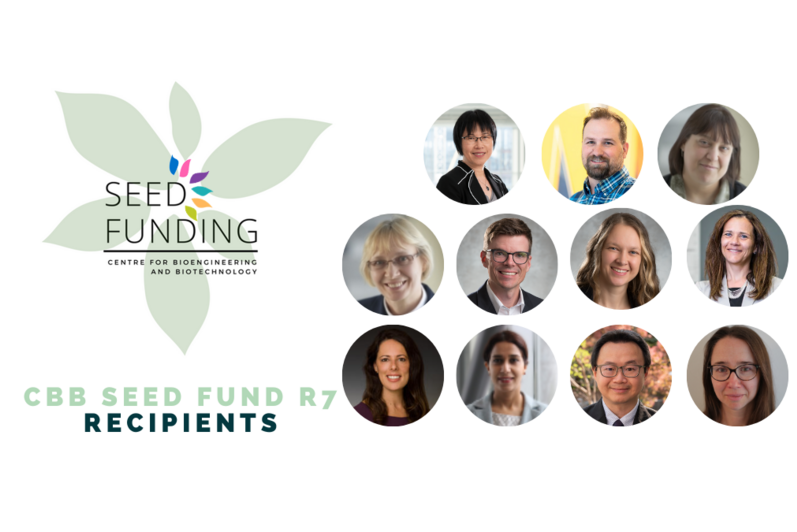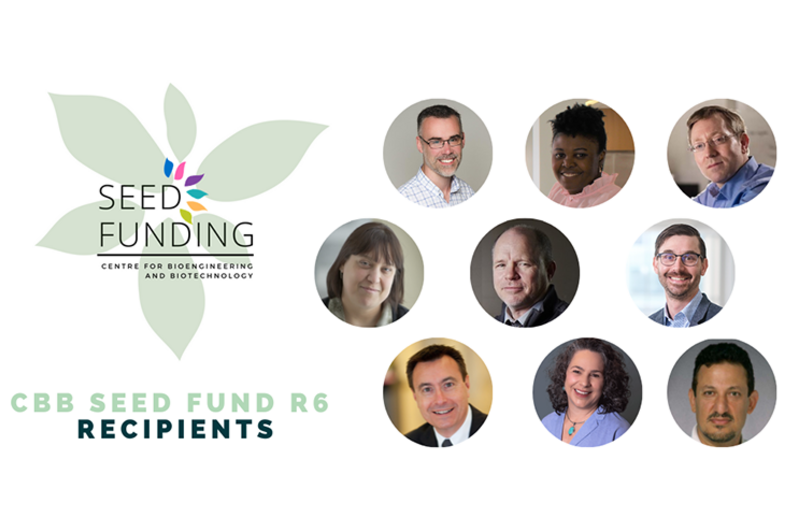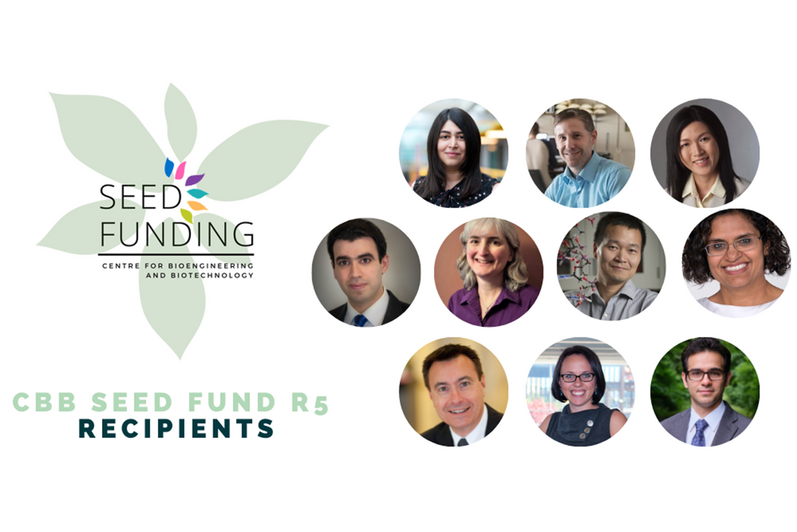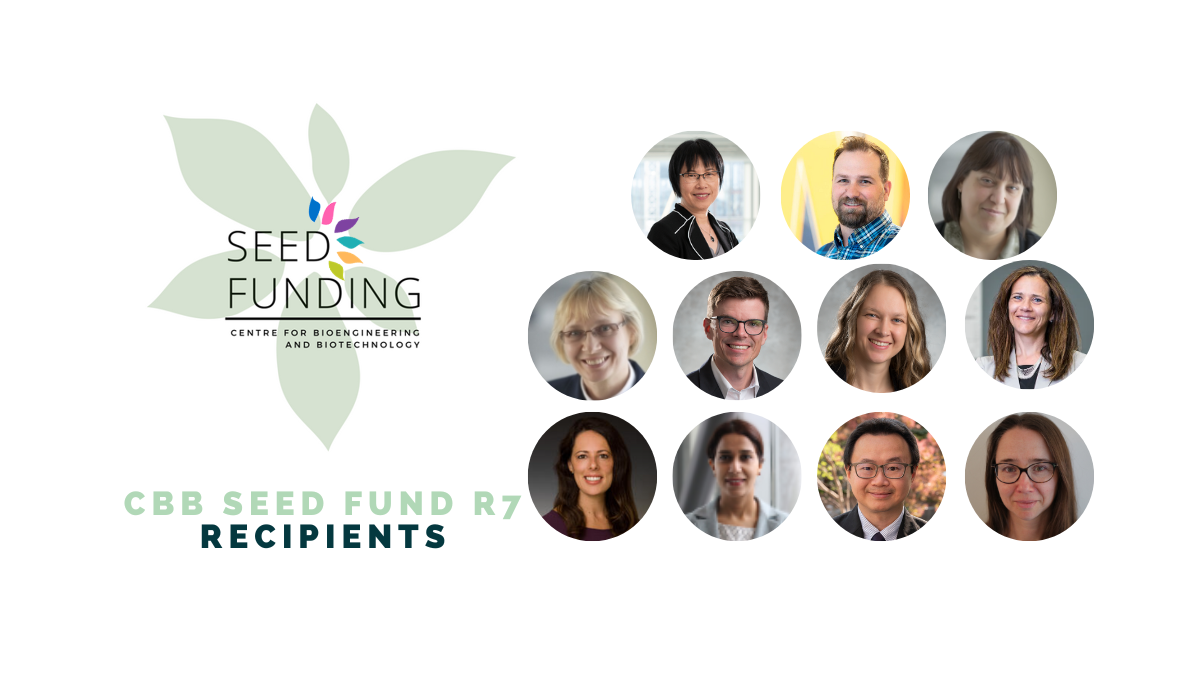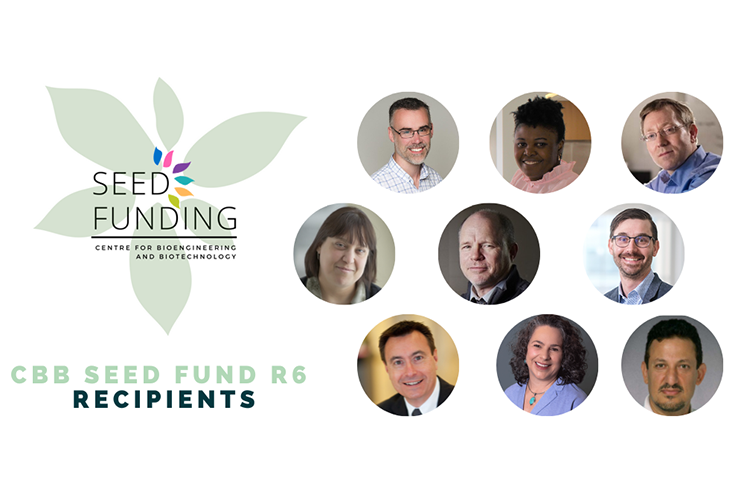The mission of the CBB seed fund is to help drive scientific innovation, growth, and opportunity through the support of collaborative research across UW faculties. Congratulations to the award recipients:
Round 8

Application of a novel microfluidic soft robotic sleeve to detect human lower-limb volumes
Jason Au | Kinesiology and Health Sciences (PI)
Carolyn Ren | Mechanical and Mechatronics Engineering
Marina Mourtzakis | Kinesiology and Health Sciences
Professor Au's project will advance digital health innovation by transforming a therapeutic soft robotic sleeve into a wearable, wireless tool for non-invasive monitoring of peripheral edema. Conditions like cancer and heart failure often involve fluid buildup in the limbs, and current assessment methods are either subjective or costly. The redesigned device offers a low-cost, accessible alternative for detecting changes in limb volume, supporting early diagnosis and ongoing symptom tracking. This novel approach has the potential to improve diagnostic accuracy, optimize treatment plans, and empower patients with more timely and actionable health insights.

A novel approach for quantifying complex hip motions during soccer maneuvers using wearable sensors and machine learning algorithms
Jordan Cannon | Kinesiology and Health Sciences (PI)
James Tung | Systems Design Mechatronics Engineering
The goal of Professor Cannon's project is to fill a critical gap in understanding femoroacetabular impingement syndrome (FAIS) by developing a wearable multi-sensor system combined with machine learning algorithms to track and quantify hip motions during soccer maneuvers. By capturing precise data on motion exposure, this innovative approach will provide valuable insights into the development and progression of FAIS, particularly in athletes. The ability to monitor and analyze these movements in real-time will advance prevention and intervention strategies, ultimately reducing the risk of hip injuries and early osteoarthritis in athletes, improving long-term joint health and performance.

An exercise eReferral strategy in primary care to prevent falls among older adults
Lora Giangregorio | Kinesiology and Health Sciences (PI)
Mohamed Alarakhia | CEO of the eHealth Centre of Excellence
Neil Naik | Family Physician
Professor Giangregorio's project aims to reduce fall-related injuries, the leading cause of hospitalization in older adults, by implementing a digital health intervention that connects primary care providers to community exercise programs for fall prevention. By co-developing and evaluating an electronic referral system with healthcare providers and community partners, this initiative ensures that healthcare professionals can easily access and refer patients to community programs. This intervention will increase participation in fall prevention programs, enhance patient outcomes, and reduce health-care costs by preventing fall-related injuries among older adults.

Development of a cobot-based arthrometer for conducting diagnostic knee joint evaluations
Yue Hu | Mechanical and Mechatronics Engineering (PI)
Stewart McLachlin | Mechanical and Mechatronics Engineering
Tim Lasswell | University of Calgary
Ryan Martin | University of Calgary
The goal of Professors Hu and McLachlin's project is to revolutionize knee joint evaluations by developing a cobot-based arthrometer for consistent and reproducible diagnostic assessments. Unlike traditional manual methods, which rely on subjective grading, this innovative technology based on collaborative robots provides precise, patient-specific biomechanical data. By integrating this tool into clinical practice, clinicians can tailor treatments and rehabilitation strategies, optimize surgical outcomes, and minimize the risk of complications. This approach promises to enhance the accuracy and effectiveness of knee joint evaluations, ultimately improving patient care and outcomes throughout the treatment process.

Integrating Physics-Informed Neural Networks and Molecular Dynamics Simulations for Personalized Nanoparticle Design in Cancer Therapy
Mohamed Kohandel | Applied Mathematics (PI)
Conrad Giresse Tetsassi Feugmo | Chemistry
Emmanuel Ho | School of Pharmacy
Professor Kohandel's project contributes to cancer therapy by designing personalized nanoparticles tailored to specific tumor profiles. By integrating Physics-Informed Neural Networks (PINNs) with Molecular Dynamics (MD) simulations, the project aims to optimize nanoparticle properties for improved drug delivery, reduced toxicity, and enhanced therapeutic efficacy. This approach advances cancer treatment by enabling more precise, patient-specific therapies, potentially improving clinical outcomes.

Multi-stimuli-responsive Hydrogels as Novel Transdermal Drug Delivery Platforms for the Treatment of Melanoma
Hamed Shahsavan | Chemical Engineering (PI)
Mahla Poudineh | Electrical and Computer Engineering
Professor Kohandel's project contributes to cancer therapy by designing personalized nanoparticles tailored to specific tumor profiles. By integrating Physics-Informed Neural Networks (PINNs) with Molecular Dynamics (MD) simulations, the project aims to optimize nanoparticle properties for improved drug delivery, reduced toxicity, and enhanced therapeutic efficacy. This approach advances cancer treatment by enabling more precise, patient-specific therapies, potentially improving clinical outcomes.
Round 7

Method and device for the detection of concussion biomarkers in saliva
Marc Aucoin | Chemical Engineering (PI)
William Anderson | Chemical Engineering (Professor Emeritus)
Shazia Tanvir | Chemical Engineering
Professor Aucoin's project aims to improve the detection of concussion through the design and development of a medical device that analyzes saliva for known concussion biomarkers. This device could significantly reduce undetected concussions, thus minimizing the risk of long-term brain damage, and promoting a safer and more informed approach to sports, head injury management, and beyond.

Using Dynamic Optical Coherence Tomography (dOCT) to investigate cellular apoptosis in breast cancer spheroids
Kostadinka Bizheva | Physics and Astronomy (PI)
Mohammad Kohandel | Applied Mathematics
Ernest Osei | Physics and Astronomy
Shawn Wettig | School of Pharmacy
Professor Bizheva’s project aims to test the ability of a novel optical imaging technique (Dynamic Optical Coherence Tomography – dOCT) to visualize individual cells in breast cancer spheroids and identify apoptotic cancer cells from regular, viable cancer cells based on the cellular metabolism. This study will advance breast cancer treatment by investigating the response of breast cancer spheroids to different treatment approaches (radiation and chemotherapy).

CAN-View: Establishing a national eye data repository for AI-driven vision care policy and innovation
Helen Chen | School of Public Health Sciences (PI)
Stan Woo | School of Optometry & Vision Science (PI)
Plinio Morita | School of Public Health Sciences
Andre Stanberry | School of Optometry & Vision Science
Professors Chen and Woo's project aims to establish CAN-VIEW, a vision data repository that will inform vision care policies and research on eye disease prevention and treatment. The project will identify and mobilize key stakeholders and use cases of the repository, getting consensus on governance principles, and producing a roadmap for the establishment of the data repository. CAN-VIEW will position the University of Waterloo as a national leader in vision data, and will help to fulill some of the objectives of the recently passed Bill C-284, which calls for a national strategy for vision care.

Eye-body coordination during stair climbing in children with amblyopia
Krista Kelly | School of Optometry & Vision Science (PI)
Lisa Christian | School of Optometry & Vision Science
James Tung | Mechanical and Mechatronics Engineering
Professor Kelly's project aims to use state-of-the-art eye tracking and body tracking methods to study how amblyopia (lazy eye) impacts the development of eye-body coordination in children. This research will increase our understanding of the role of vision early in life on the development of motor skills, and will open new avenues for the design of interventions to help amblyopic children surmount obstacles to proficient motor ability, promoting physical, social, and academic success.
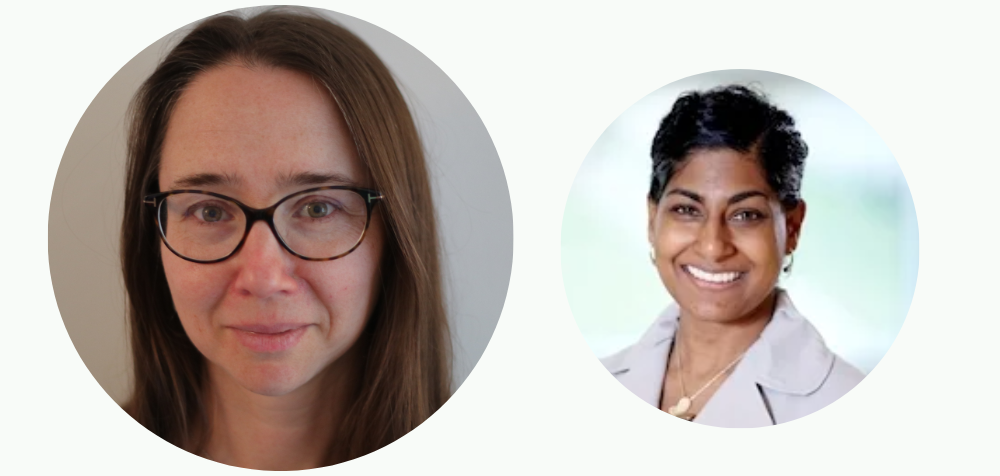
Biomechanics in the clinic: Using novel markerless motion capture technology to stratify functional severity in knee osteoarthritis patients
Elise Laende | Systems Design Engineering (PI)
Kevin Deluzio | Smith Engineering, Queen's University
Rick Lau | Orthopaedic Surgeon, Grand River Hospital
Monica Maly | Kinesiology and Health Sciences
Professor Laende's project aims to use markerless motion capture technology and machine learning to analyze the movement of patients with knee osteoarthritis, which will allow clinicians to better assess physical function and improve patient evaluations.

Microwave sensor integrated with a microfluidic platform for high throughput testing of novel preventive strategies for Alzheimer’s disease
Zoya Leonenko | Physics and Astronomy (PI)
Carolyn Ren | Mechanical and Mechatronics Engineering
Professors Leonenko's and Ren's new collaboration project is focused on the development of a novel microwave sensor integrated with a microfluidic platform to enable high throughput testing of new substances with the potential to test new treatments for Alzheimer’s disease. This research will contribute to advancement of knowledge in Alzheimer’s and aging research, and potentially will result in a commercial device that will speed up the testing of new promising compounds to overcome this disease.

Soft antimicrobial microrobots targeting urinary tract infections
Veronika Magdanz | Systems Design Engineering (PI)
Monica Farcas | Urologist, St. Michael's Hospital
Sushanta Mitra | Mechanical and Mechatronics Engineering
Professor Magdanz's, project aims to develop a noninvasive method for fighting infections in the urinary tract (UTIs) in a highly targeted and active manner by utilizing flexible small-scale, drug-loaded robots. These robots can be placed into the renal pelvis to clear out infections quickly, as an innovative solution for patients with recurring or chronic infectious kidney stones, for whom it is challenging to schedule surgery or where antibiotic resistances exist that make oral administration of antibiotics difficult.

Development of a surgical navigation system for arthroscopic knee ligament reconstruction
Stewart McLachlin | Mechanical and Mechatronics Engineering (PI)
Andre Hladio | Intellijoint Surgical
Tim Lasswell | University of Calgary
Ryan Martin | University of Calgary
Professor McLachlin's project aims to improve knee ligamant reconstructive surgery by developing navigation technology that can track the position of the grafts that are typically used to replace torn ligaments. This technology could potentially optimize graft performance and reduce complications in torn knee ligament repair.

Harnessing technology and AI to advance the pediatric assessment of sensorimotor and cognitive functions
Ewa Niechwiej-Szwedo | Kinesiology and Health Sciences
Lisa Christian | School of Optometry & Vision Science
Ben Thompson | School of Optometry & Vision Science
James Tung | Systems Design Engineering
Nino Zahirovic | AdHawk Microsystems
The goal of Professor Niechwiej-Szwedo's project is to develop an innovative, technology-driven approach to allow for a detailed assessment of eye-hand coordination in children using eye tracking, a high-speed camera and artificial intelligence. This research will inform the diagnostic criteria for children with neurodisabilities and lay a foundation for developing targeted interventions to improve motor function.

Smart Shunt: A continuous monitoring technology for early infection detection, measuring intracranial pressure, and tracking shunt patency
Mahla Poudineh | Electrical and Computer Engineering
Joshua Bernstock | Neurosurgery, Brigham and Women’s and Boston Children’s Hospitals
Robert Langer | Koch Institute for Cancer Research, MIT
Juewen Liu | Chemistry
Shriya Srinivasan | Bioengineering, Harvard
Professor Poudineh's project is focused on develping a smart shunt for treating hydrocephalus, a condition where there is too much fluid in the brain. This smart shunt will improve on existing solutions by making it easier to detect problems like blockages and infections, which will help patients by catching issues early and reducing the need for invasive tests.

Accurate Sarcopenia diagnosis using muscular ultrasound innovations
Alfred Yu | Electrical and Computer Engineering
Marina Mourtzakis | Kinesiology and Health Sciences
The goal of this collaborative research project between Professors Yu and Mourtzakis is to advance ultrasound technology to obtain accurate muscular measurements in all individuals, including those who are obese and overweight that constitute over 60% of the Canadian adult population. This research will improve the utility of ultrasound as a technique for diagnosing sarcopenia (loss of muscle mass and strength), a disease that affects 10% of healthy adults over 60 years old and is associated with morbidities including bone loss and diabetes.
Round 6
|
 Measurement of visually-evoked blood flow changes and neuronal activity in the human retina with a combined Optical Coherence Tomography (OCT) and Electroretinography (ERG) system Kostadinka Bizheva | Physics and Astronomy (PI) Nadine Furtado | School of Optometry and Vision Sciences Chris Hudson | School of Optometry and Vision Sciences Potentially blinding retinal diseases such as glaucoma, diabetic retinopathy and age-related macular degeneration affect the world’s aging population and amount to >$1.5B in direct costs to the Canadian Health Care System (CHCS) annually. They cause changes in the retinal structure, blood flow and function that can be measured with OCT non-invasively and simultaneously. This can reduce the overall time for patient examination, number of clinical personnel required for imaging patients and data processing, and rental cost of clinical space (housing one vs multiple imaging instruments). This approach will result in significant reduction of the direct CHCS costs for retinal exams. |
|
 Lyndon Jones | School of Optometry and Vision Science (PI) Debbie Jones | School of Optometry and Vision Science Vision is critical to the quality of life, but at times corneal health can be threatened by the impact of various “foreign bodies”. Small pieces of metal, glass, wood or plastic in the environment can become lodged in the cornea through everyday activities. When left untreated, these particles cause pain, tissue damage and potentially vision loss. Unfortunately, eyecare practitioners (optometrists and ophthalmologists) are often poorly trained in the removal of impacted corneal foreign bodies, which could potentially lead to delayed or suboptimal treatments for patients. This project aims to develop a comprehensive educational package consisting of instructional videos combined with a physical eye model to teach foreign body removal (FBR). |
|
 Bringing nutrition and exercise curricula and resources to healthcare professionals and trainees to promote aging in place |
Heather Keller | Kinesiology and Health Sciences (PI)
Jason Au | Kinesiology and Health Sciences
Tyson Beach | Kinesiology and Health Sciences
Michael Barnett-Cowan | Kinesiology and Health Sciences
Feng Chang | School of Pharmacy
Clark Dickerson | Kinesiology and Health Sciences
Caryl Russell | Kinesiology and Health Sciences
Steve Fischer | Kinesiology and Health Sciences
Lora Giangregorio | Kinesiology and Health Sciences
George Heckman | School of Public Health Sciences
Andrew Laing | Kinesiology and Health Sciences
Monica Maly | Kinesiology and Health Sciences
Laura Middleton | Kinesiology and Health Sciences
Andrew Robertson | Kinesiology and Health Sciences
Changes in health are common with age and can result in crises requiring a hospital admission that jeopardize aging in place. A healthy diet and exercise are behaviours that support aging in place. There is a need to equip health care professionals who support older adults with the best evidence on exercise and nutrition. We will explore knowledge gaps, specific to older adult exercise and nutrition, among undergraduate and graduate health program trainees and providers. We will develop a framework to spread knowledge regarding the use of exercise and nutrition for older adults, including resources currently created by our team.

Utilizing CT Image Based Data and Biomechanical Approaches to Improve Surgical Management of the Proximal Humerus
Nikolas Knowles | Kinesiology and Health Sciences (PI)
Andrew Laing | Kinesiology and Health Sciences
Jack Callaghan | Kinesiology and Health Sciences
Demand for shoulder replacements is increasing exponentially due to an aging population. With younger patients driving much of the demand, bone preserving joint replacement implants are gaining popularity. New designs rely on existing bone for fixation and support, but little data exists to guide surgeons in determining which patients would benefit from these designs, and which are at increased risk of early failure. Bone strength is a measure that relates bone density and other characteristics to bones mechanical properties and may distinguish individuals who are ideal candidates for new implant designs or at risk of early failure.

A transformative approach to stroke rehabilitation and recovery: developing a user-driven stroke-specific analytics pipeline for wearables data
William McIllroy | Kinesiology and Health Sciences (PI)
Sherri Thomson | Kinesiology and Health Sciences
Caryl Russell | Kinesiology and Health Sciences
James Tung | Mechanical and Mechatronics Engineering
Kit Beyer | Kinesiology and Health Sciences
Karen Van Ooteghem | Kinesiology and Health Sciences
Wearable sensor technology has the potential to provide valuable information about the daily behavior of individuals with stroke and the factors impacting their recovery and function. However, commercial systems using generic analytics lack the detail, accuracy, and sensitivity to produce meaningful outputs that impact personal and clinical decision making. The present work adopts a unique multi-sensor approach to develop novel stroke-specific analytics that address the challenge of identifying, extracting, and analyzing impairments related to stroke. Developing these analytics is critical to translating wearable sensor data into impactful, usable feedback for individuals with lived stroke experience and their health care team.

Are interactions between an animal’s social rank and its sex likely to affect its performance in a learning and memory task?
John Mielke | School of Public Health Sciences (PI)
Jean Flanagan | Office of Research Ethics
Reza Ramezan | Statistics and Actuarial Science
Most animal facilities keep rodents in small groups and the prevailing assumption is that each group member will be have similarly on cognitive tasks. However, the dominance hierarchies that naturally develop among rodents may interfere with such a belief. Indeed, we have collected preliminary data to suggest that the social position of a male animal may be an important source of variability. To build on our preliminary observation, the proposed work will aim to determine (a) whether social position also affects the behaviour of female animals and (b) whether a “sex by social rank” interaction takes place.
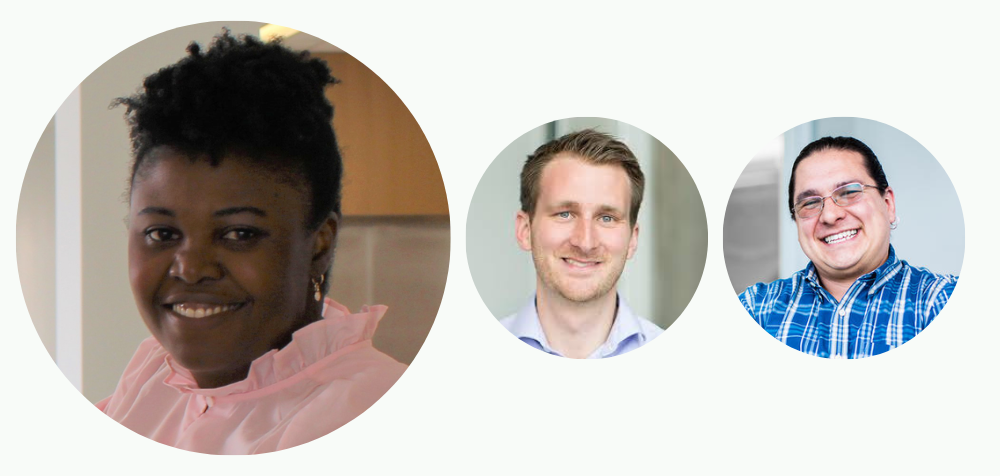
Web solutions to improve linkages between the public and private sector tuberculosis care providers in Nigeria
Charity Oga-Omenka | School of Public Health Sciences (PI)
Plinio Morita | School of Public Health Sciences
Warren Dodd | School of Public Health Sciences
Tuberculosis is a leading cause of infectious disease and death with an estimated 10.6 million infections in 2021, with 45% not diagnosed. Nigeria is among5 the countries accounting for 75% of this gap. Progress towards ending tuberculosis settings like Nigeria has been hampered by weak linkages between the public sector where most tuberculosis health care services are located, and the private sector where 65-85% of initial healthcare seeking happens. Web-based technologies have the potential to improve disease control in these settings. We aim to conduct an assessment towards developing a web-based portal to improve tuberculosis surveillance, diagnosis, and treatment in Nigeria.
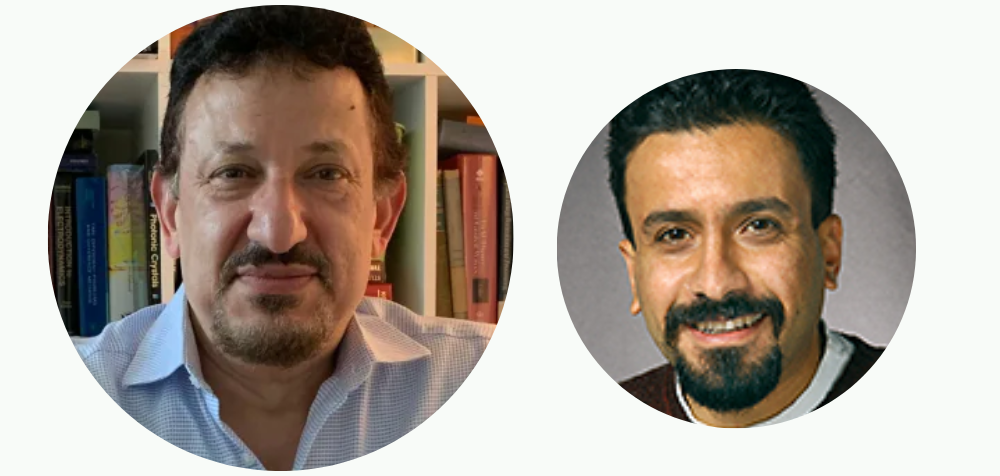
Mammography using Low-Frequency Electromagnetic Fields
Omar Ramahi | Electrical and Computer Engineering (PI)
William Melek | Mechanical and Mechatronics Engineering
X-ray mammography had been the mainstay of breast cancer screening for most women around the world. The challenge with this modalityis twofold: First, X-rays are potentially harmful due to their ionization effect. Second, the ineffectiveness inscreening women with dense breasts. This project will develop a breast-cancer screening modality using Low-frequency electromagnetics fields (LFEMF). Unlike X-rays, LFEMF can easily penetrate dense tissues without ionization. This proposes system will have a profound effect on women health as it would allow women to undergo breast-cancer screening on a regular basis without fear of tissue ionization and harmful side effects.

Beyond Bone Mineral Density: Towards Clinical Detection of Bone Fragility Based on Bone Collagen
Thomas Willett |Systems Design Engineering (PI)
Alexander Wong | Systems Design Engineering
Bone fractures are a billion dollar per year burden on the Canadian health care system. X-ray-based tools like DEXA (bone density) and CT scans are poor at detecting fragility and predicting fractures on a patient-by-patient basis, because x-rays only ‘detect’ the mineral of the bone tissue, its amount and macrostructure, while bone tissue is half mineral and half protein by volume. A large part of bone tissue’s fracture resistance relies on the health (or ‘quality’) of the protein. Few clinical tools for the evaluation of a patient’s bone tissue ‘quality’ exist and none focus on the protein. There is an unmet need for a way to assess the quality of the protein phase of a patient’s bone tissue. Such a technology could lead to better understanding of and diagnosis of skeletal fragility, and ideally lead to better prevention of fractures.
Round 5
Award Winners:
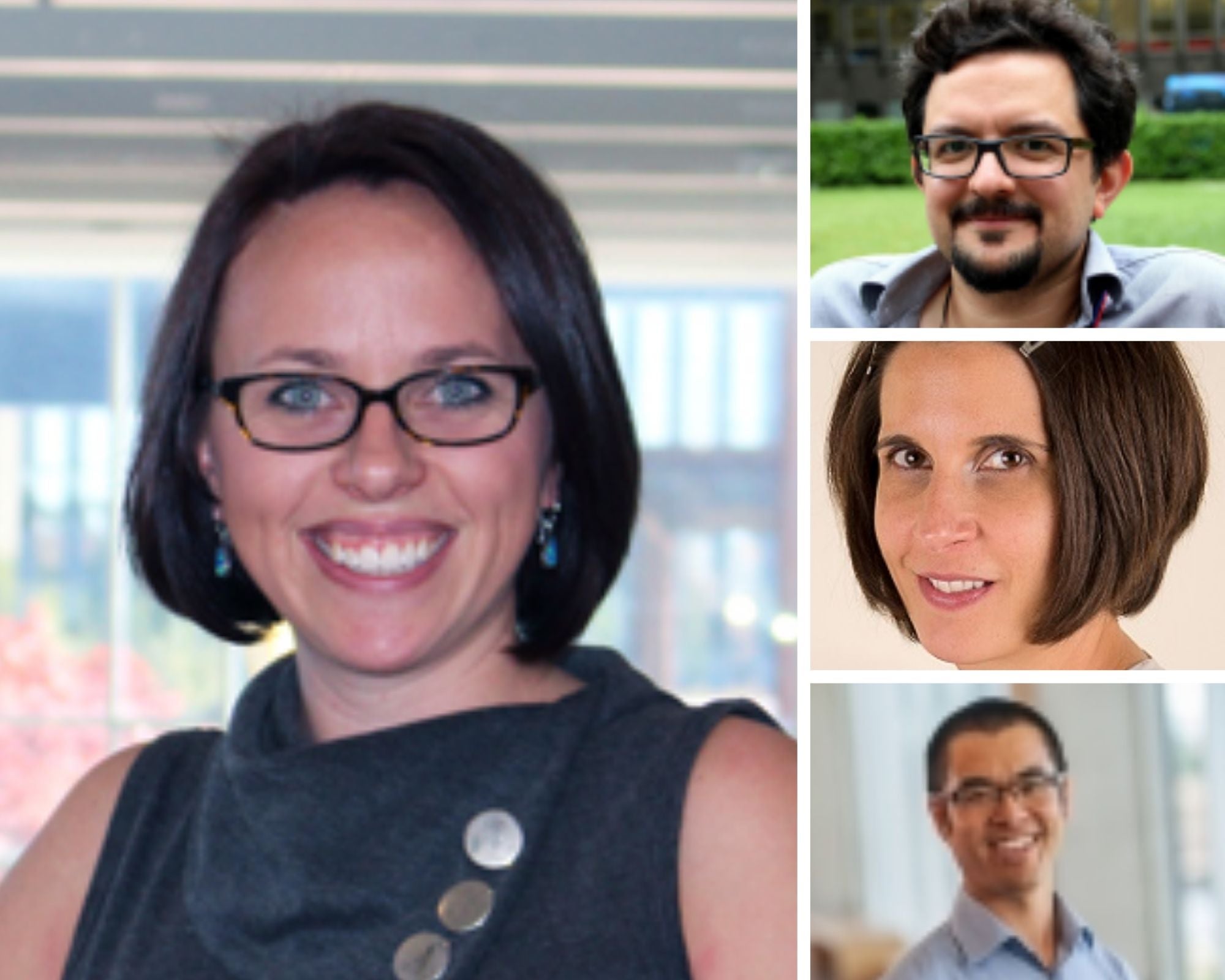 Arash Arami, Mechanical and Mechatronics Engineering Karen Van Ooteghem, Kinesiology and Health Sciences James Tung, Mechanical and Mechatronics Engineering Freezing of Gait (FOG) is arguably the most debilitating symptom of Parkinson’s disease, resulting in an increased risk of falls and self-imposed constraints on physical activities. Wearable technologies have the potential to detect and predict FOG episodes which could improve remote tracking of FOG progression and treatment effectiveness. The challenge is that FOG presents differently across individuals. Furthermore, few studies have developed analytical techniques that detect or predict FOG at home. The proposed research will take this crucial next step to characterize different ‘subtypes’ of FOG and by applying and extending our team members’ algorithm (AA). We will evaluate whether a one-size-fits-all analytic approach can accurately detect and predict all FOG episodes in both the home and clinic, despite known heterogeneity. |
 Kerstin Dautenhahn, Electrical and Computer Engineering Colin Ellard, Psychology Plinio Morita, Public Health Sciences We aim to create a platform where a social companion robot can be developed by leveraging from the existing health sensors, to support mental and physical health and well-being. We propose to design a user-friendly approach to monitoring and reporting health data. This could especially benefit older adults, those with specific health conditions, and in situations such as the COVID-19 pandemic where monitoring and treatment from a safe distance is beneficial. |
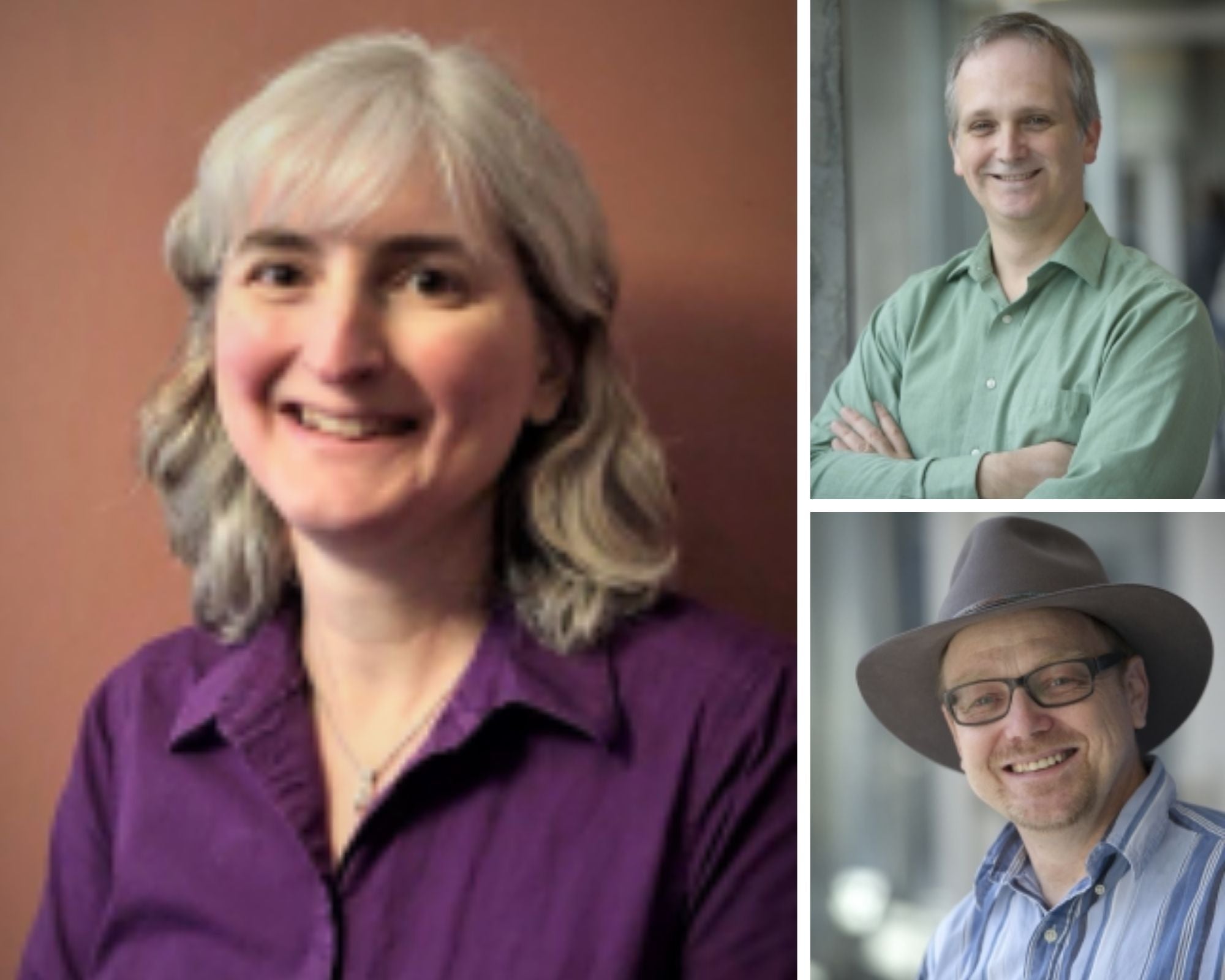 Brendan McConkey, Biology Brian Dixon, Biology Neutrophils (a type of white blood cells) play an essential role in inflammation. Up to a million of neutrophils invade the front of the eye during prolonged eye closure (1 hour or more, thus every night as we sleep) and yet limited inflammation and tissue damage are observed. A tight control mechanism must then exist to protect the eye. What makes these neutrophils different from circulating blood neutrophils and how different are they with ocular allergy are the questions this pilot study aims to answer. This project will contribute to the development of new research avenues and treatments of ocular inflammation. |
 Shirley Tang, Chemistry Developing new drug formulations and delivery methods, especially for treating back of the eye diseases, requires sophisticated eye models. However, there are no currently suitable eye mimics (either invitro or animal models), that are cost-effective for early-stage screening. Consequently, RD for new ophthalmic formulations is expensive and time consuming for academia and industry. Our research aims to use novel 3D printing methods to fabricate cost-effective eye models to test the movement and absorption of drugs throughout the various structures of the eye. The eye models developed through this project (and their future iterations) can be used to improve RD for new ophthalmic products. |
 Richard Hughson, Kinesiology and Health Sciences George Shaker, Electrical and Computer Engineering James Tung, Mechanical Mechatronics Engineering George Heckman, Public Health Sciences Mayank Kalra, Department of Kinesiology and Health Sciences Chris Perlman, Public Health Sciences Canada’s aging population poses critical challenges for our society. Falls are the primary reason for injury-related death, hospitalization, and emergency department visits for older adults in Canada, with annual costs of $5.6 billion. The proposed research brings together a multi-disciplinary team towards better understanding falls risk. We will use a novel health database to characterize the circumstances of falls for older adults in long-term care. Wireless devices will measure physiologic and balance metrics during everyday activities in high-risk fallers. This use of a novel health database to facilitate resident-centric physiologic measurements has powerful implications for research and clinical practice. |
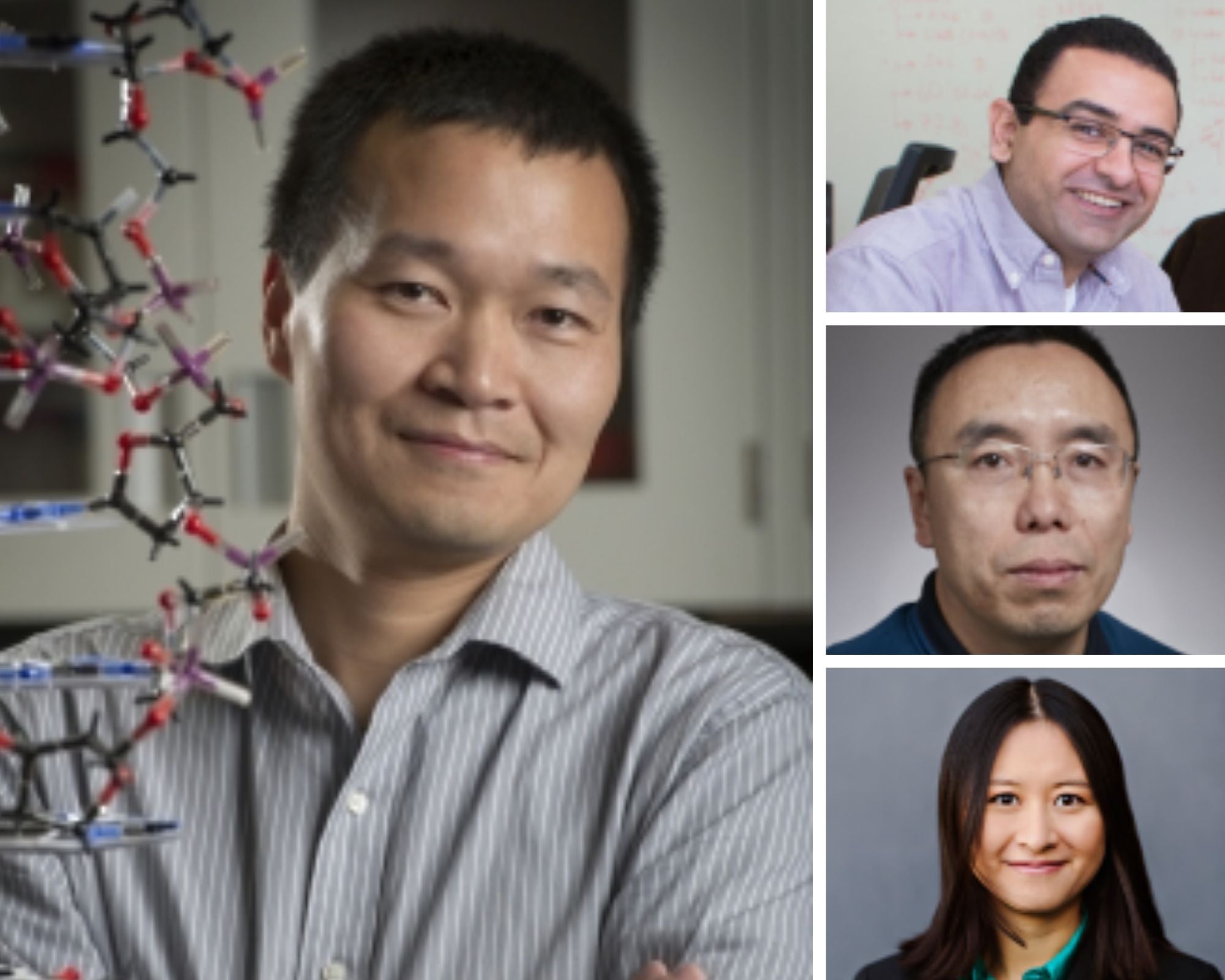 George Shaker, Electrical and Computer Engineering Bo Cui, Electrical and Computer Engineering Lan Wei, Electrical and Computer Engineering Uric acid is a biomarker for a number of diseases related to infection, kidney diseases, and gout. Most current biosensors rely on electrochemistry for the detection of uric acid, which require a battery, electric circuits, and signal transmission units to be incorporated. To simplify the sensor design, we plan to achieve wireless signal transduction. This project will transform wearable biosensor design by making them more practical, cost-effective, and more environmentally friendly. |
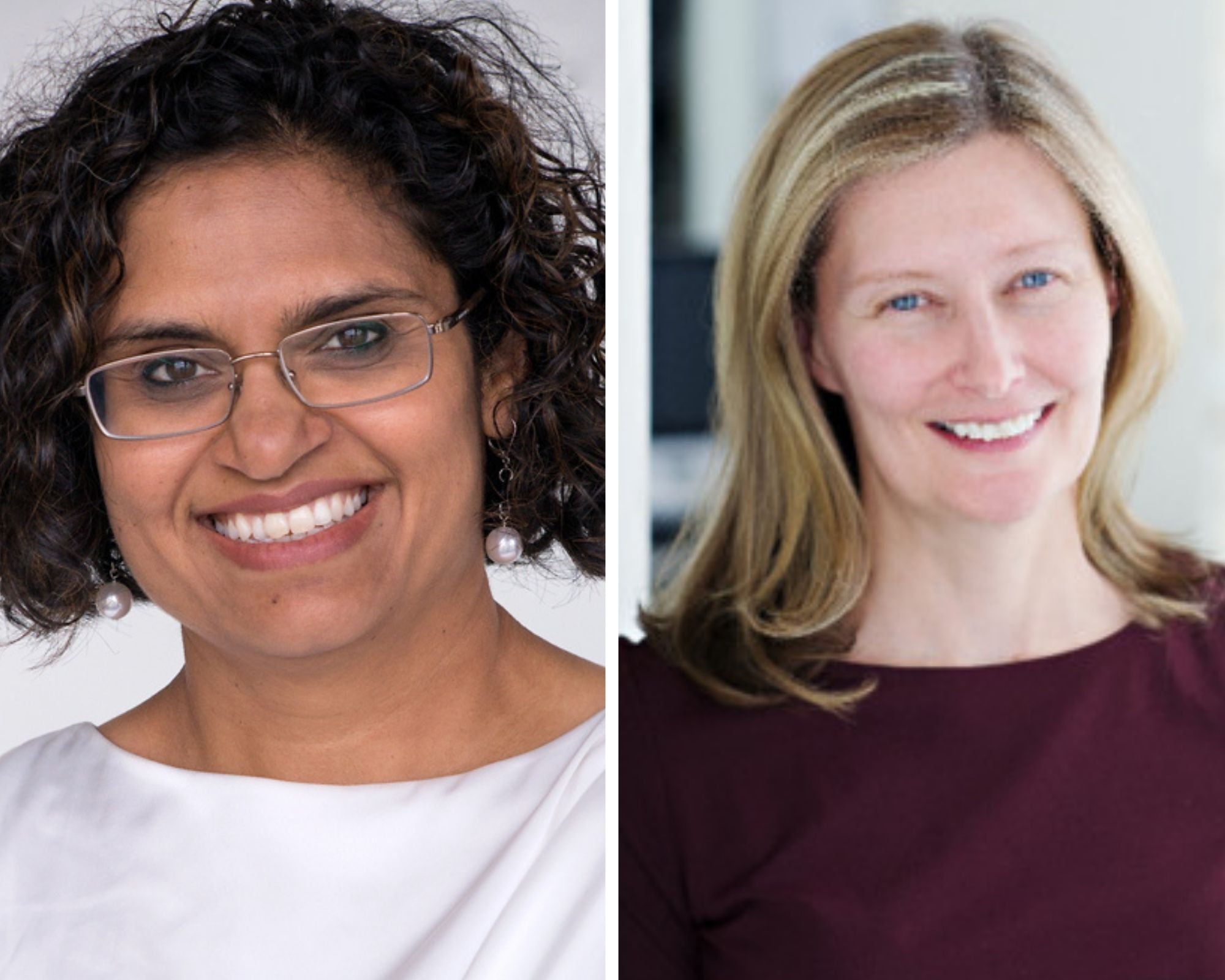 Catherine Burns, Systems Design Engineering In-home medication dispensing technology can track medication intake by patients automatically. This information can be used by end users such as patients, care partners and clinicians to identify patterns of non-adherence and design personalized strategies to improve medication taking. If this data is not presented easily or clearly it runs the risk of not being utilized or misinterpreted and can impact patient safety. However, the best way to present this information to end users so that they can use it effectively to address non-adherence is not known. This project intends to determine the key features, utilities, and functionalities of an adherence dashboard so that patients, care partners and clinicians can effectively use it to identify and improve medication adherence. |
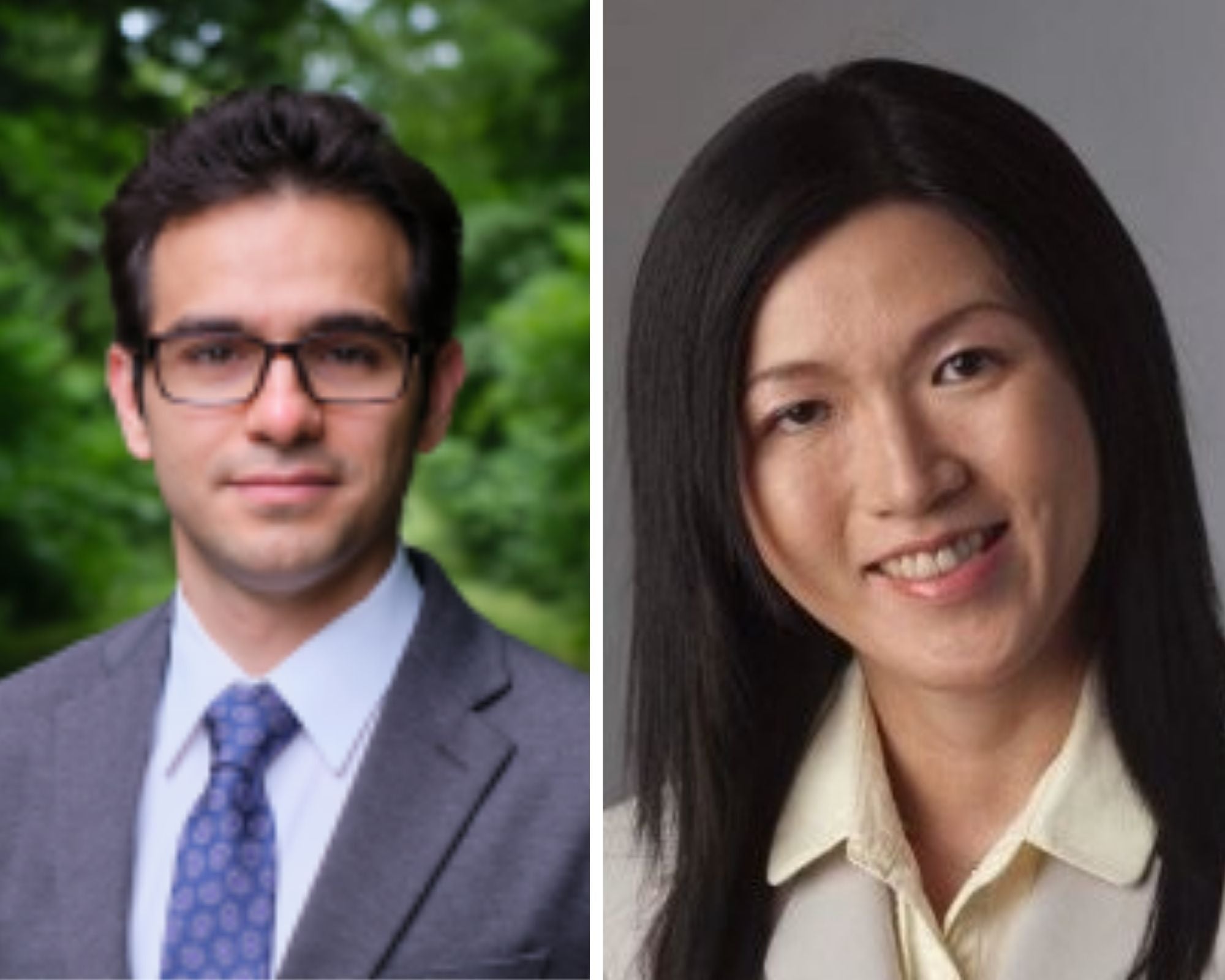 Evelyn Yim, Chemical Engineering Medical robots interact with the human body in various surgical, diagnosis, and therapeutic procedures. Such robots traditionally contain rigid and bulky components which limit robots’ non-invasive and targeted functionality in tiny biological environments. To address this problem, emerging medical robots heavily rely, in their structure and function, on soft and responsive materials that could be architectured, programmed, and manipulated in submillimetre scales. Developing non-toxic and anti-fouling materials with all the above-mentioned features is still a grand challenge hindering the fabrication and widespread use of small-scale robots in real-world applications1–4. We aim to tackle this challenge in the proposed research. |
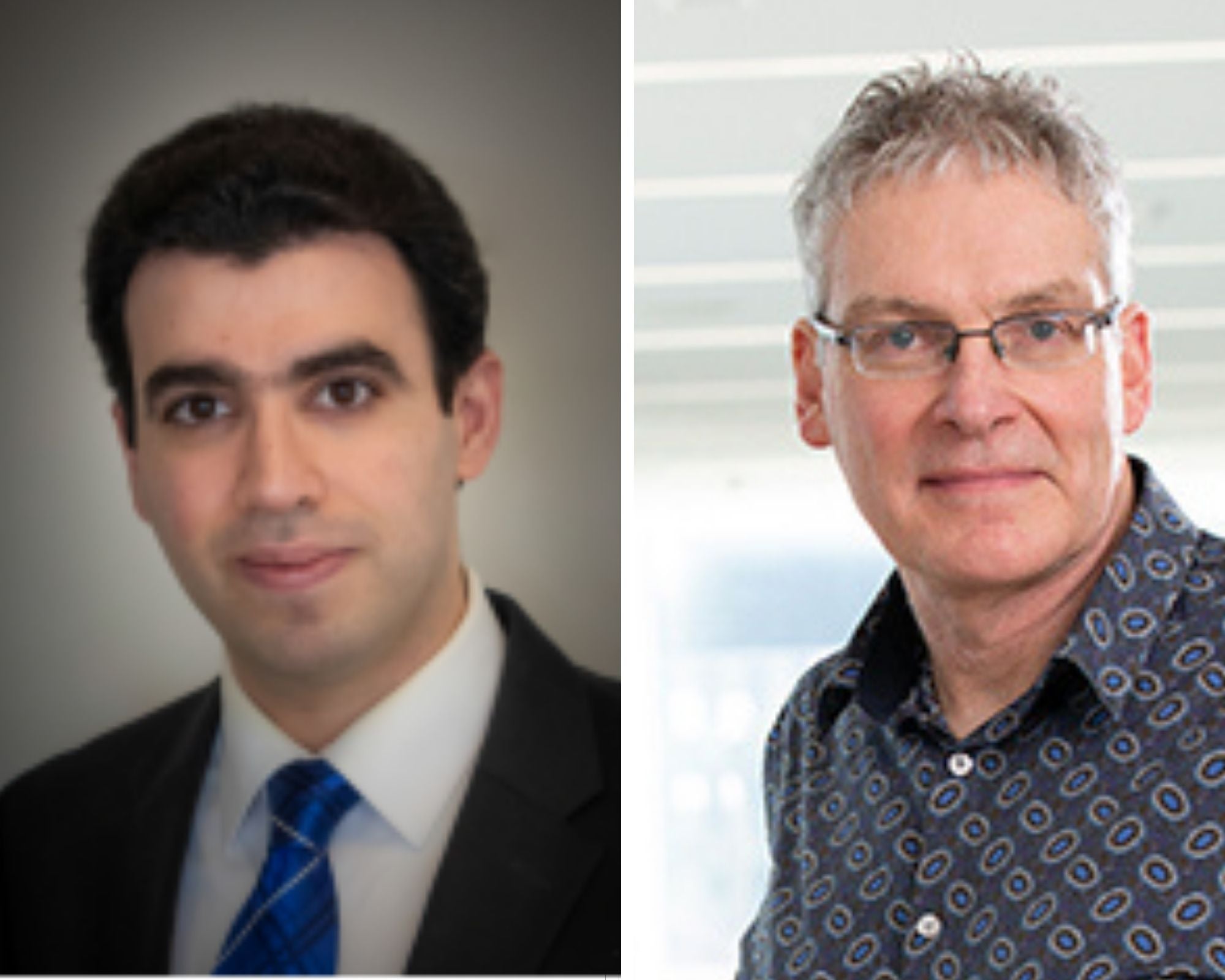 Philip Bigelow, Public Health Sciences Canadian paving industries produce over 31 million tonnes of hot mix asphalt (HMA) annually. Consequently, the common practice of HMA production at elevated temperatures (above 145oC) results in high levels of Volatile Organic Compounds’ (VOC) emission and particulate matters which can adversely impact construction workers’ health and the environment. This research, therefore, focuses on benefits of using greener technologies such as warm mix asphalt (WMA) and cold mixes, which allow mix production at 110 and 40oC, respectively. Adoption of these sustainable technologies not only saves on fuel consumption and costs, but also promotes workers’ safety and protects the environment. |
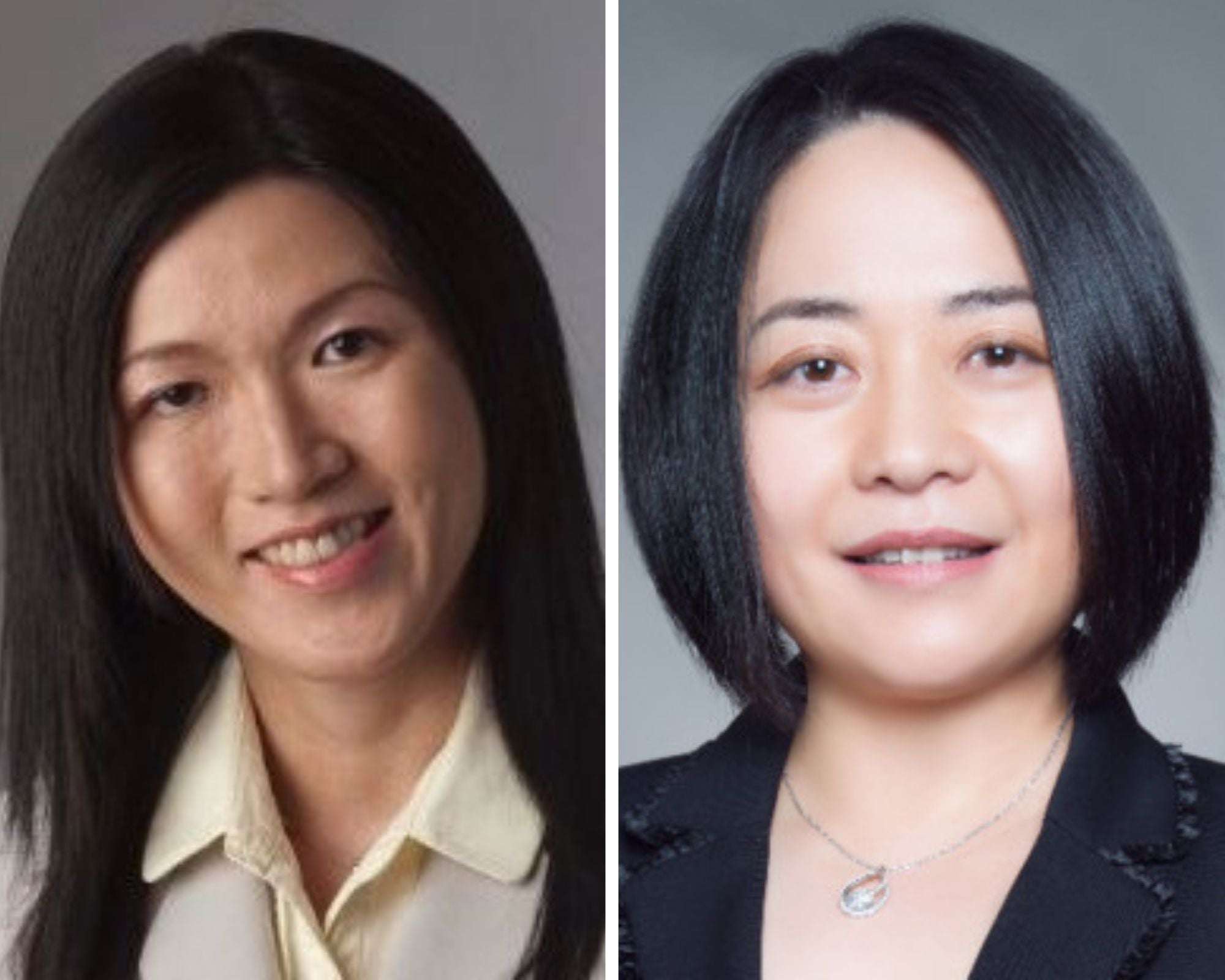 Carolyn Ren, Mechanical and Mechatronics Engineering Human organoids have a great potential in drug screening and personalized medicine applications. Current challenges include issues with generation throughput and reproducibility. The animal derived Matrigel has played a significant role in organoid culture; however, it is undefined and introducing variability. Thus, it would be essential to find alternative hydrogel systems that support organoid growth with consistent results. Droplet microfluidics (DM) technology enable precise control of reaction environment within droplets, with capability to generate large number of reproducible microcapsule for high-throughput studies. We will employ DM to generate tunable microdroplet to study potential hydrogel and the bioactivities with single cell encapsulation. |
Round 4
Award Winners:
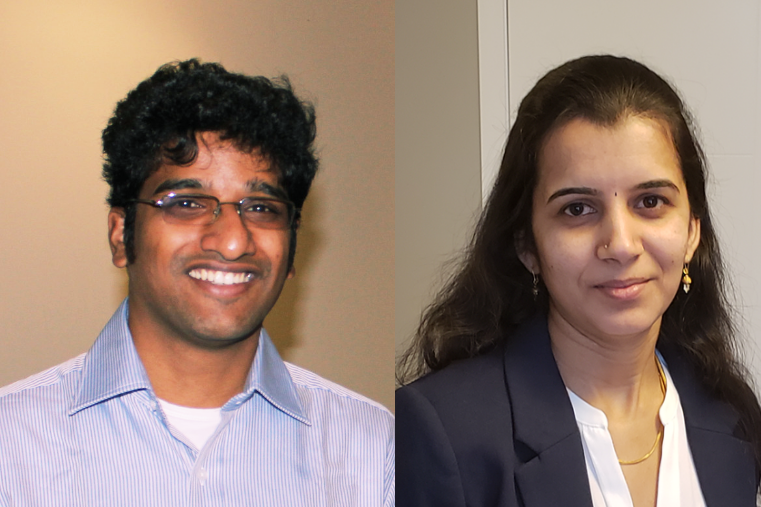 Subha Kalyaanamoorthy, Chemistry In silico design and biochemical validation of potent small molecules against SARS-CoV-2 main protease. Coronavirus pandemic caused by the severe acute respiratory syndrome coronavirus 2 (SARSCoV-2) remains a serious health concern for human population and has already resulted in more than 1.9 million deaths worldwide. There is an urgent need to develop therapeutics against this deadly virus. The main protease (Mpro) enzyme in SARS-CoV-2 is an important molecular machinery in mediating the viral replication and survival; therefore, it is considered as a crucial target to fight the virus. Our recent research highlighted key molecular level insights to achieve stable drug binding in Mpro so as to effectively inhibit its function. Building on these findings, our research is focused on developing small molecules to target Mpro for controlling the replication of the novel coronavirus. |
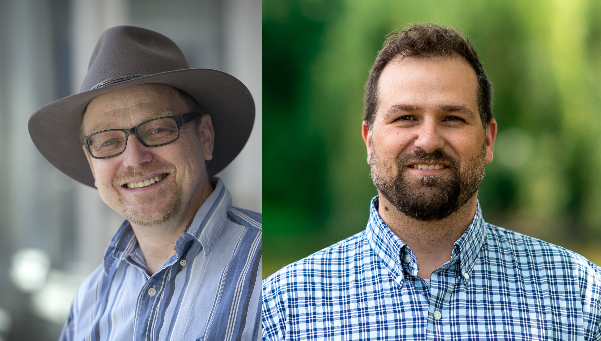 Marc Aucoin, Chemical Engineering Assessing protective immunity to COVID19 provided by prior seasonal coronavirus infection. COVID19 has devastated human health and economies around the world. SARS-CoV-2 is related to seasonal corona viruses and it has been suggested that they provide protection through T cell immunity, although evidence for this is lacking. If we can show this cross protection directly through experimentation, we will help understand a current major global problem. This will improve outcomes for patients, thus saving lives, as well as contributing knowledge that can be used to reopen global economies. |
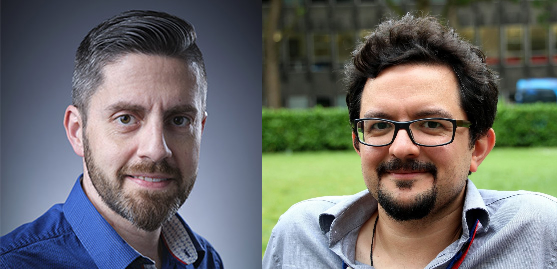 Arash Arami, Mechanical and Mechatronics Engineering Customizing shoulder rotator cuff repair rehabilitation through human in the loop feedback Recovery from a rotator cuff tear is usually long and difficult as no standardized rehabilitation program exists to accelerate recovery following repair. Suggested exercises focus on strengthening surrounding shoulder muscles while unloading the supraspinatus (which includes the damaged tendon) in order to retain function. This is very difficult to guarantee as the muscles engage together, in large part to stabilize the shoulder. Our approach gamifies rehabilitation methods to enhance confidence that the correct muscles are recruited, thereby decreasing the likelihood of surgical repair failure. |
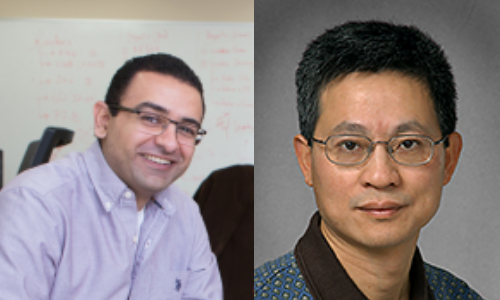 Norman Zhou, Mechanical and Mechatronics Engineering Battery-free Wearable Sensors for Better Patient Monitoring 10-20% of patients are readmitted to hospitals within 30 days. These readmissions cost $40B annually in the US. Healthcare workers need better remote patient monitoring solutions to enable better patient outcomes and lower the burden on the healthcare system. |
 Mahesh Tripunitara, Electrical Engineering; IOT Ecosystem for enhancing self-care for persons living with dementia Almost a million Canadians, and 44 million people worldwide, live with Alzheimer’s disease and related dementias (ADRD)1. Dementia is a syndrome of conditions that impairs memory, thinking, and the ability to undertake day-to-day activities. The risk of dementia doubles every five years after age 65, affecting a third of those reaching the age of 852. In Canada, a recent study estimates that the combined Canadian health care system costs and out-of-pocket caregiver costs from ADRD amounted to $10.4 billion in 2016; by 2031, this figure is expected to increase to $16.6 billion3. In Ontario, the cost for memory care (a facility providing specialized care for those living with dementia) is $4000-$6500 per month per person3. Most people living with dementia (PLWD) and their family care partners would prefer being able to stay in their own homes as long as possible4, and this project aims to integrate Internet of Things (IoT) technologies to enable them to do so safely. Expected outcomes are improved quality of life, reduced exposure to infection, and lower societal cost. |
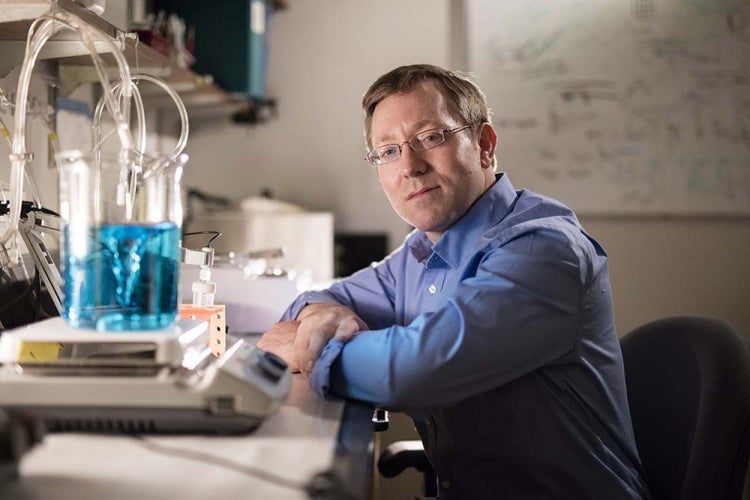 Should an animal’s social position among cagemates be considered during pre-clinical drug evaluation? Although the assumption is that animals housed together will behave similarly on cognitive tasks, the dominance hierarchies that develop among male rodents may interfere with such a belief. Indeed, the possibility exists that the social position of an animal in its group may be a source of variability interfering with the accurate measurement of a drug’s cognitive effect. As a result, the proposed work will help determine whether social position in standard laboratory animal housing should be regarded as an important factor in pre-clinical drug testing. |
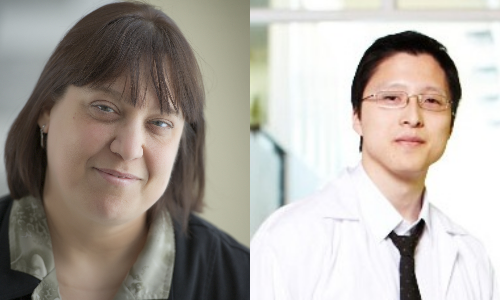 Alex Wong, Systems Design Engineering Non-invasive, label-free imaging and identification of limbal stem cells with Optical Coherence Tomography (OCT) The limbus is about 1.5 mm wide transitional region of tissue that separates the peripheral cornea (the front transparent part of the eye) from the conjunctiva and sclera (the white part of the eyeball). The limbus contains well-defined regions (crypts) that house the limbal stem cells (LSC), which are responsible for the continuous regeneration of the corneal epithelium (the outermost cellular layer of the cornea). The limbal crypts also contain progenitor cells (the daughter cells of the LSC). Limbal stem cell dysfunction /deficiency (LSCD) is a condition that causes loss of normal function and eventually death of the LSC. LSCD causes decreased vision, photophobia, chronic inflammation, recurrent episodes of pain and in severe cases leads to blindness. LSCD affects > 5% of Canadians and can be treated both medically (topical medications and contact lenses) and surgically (transplantation of healthy LSCs) in severe cases. Clinical problem: Surgical treatment of LSCD requires harvesting of healthy LSCs from donors and implanting them at specific locations in the limbus of LSCD patients. However, currently there are no clinical imaging modalities that can image limbal cells in-vivo and without contact with the corneal surface and identify the limbal stem cells from the progenitor cells in the limbal crypts. Significance: The OCT technology and the novel biomarker for non-contact and “label-free” identification of LSC in OCT images, will help surgeons to correctly identify healthy LSC zones from LSC-deficient areas and permit safe, targeted harvesting of donor LSC and accurate placement of LSC transplants in deficient areas. Therefore, the OCT technology and biomarkers have the potential to become invaluable clinical tools for early diagnostics and more precise grading of LSCD, monitoring the effectiveness of treatment of LSCD, as well as pre-operative planning and post-operative evaluation of subjects treated with LSC transplantation surgery. |
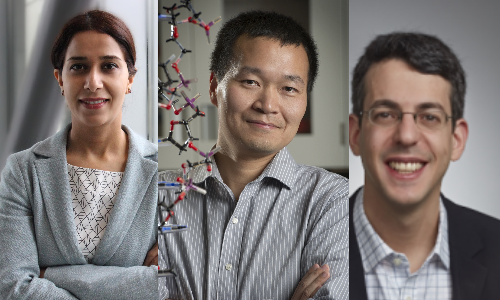 Juewen Liu, Chemistry; In Canada, insulin is one of the top five medications associated with adverse drug reactions causing death. Accurate insulin dosing is highly important to avoid diabetic complications. A wearable sensor capable of continuously measuring insulin in addition to glucose has the potential to revolutionize diabetes care by enabling truly personalized insulin dosing. Such a sensor allows the clinicians to tailor the therapeutic regimens to consistently deliver insulin with maximum efficacy and minimal side-effects. |
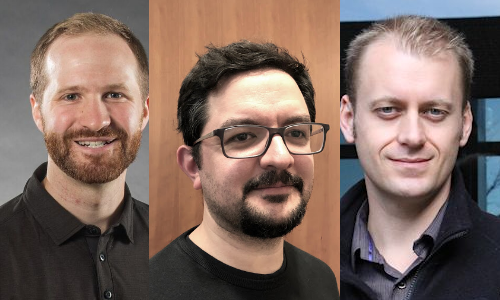 Arash Arami, Mechanical and Mechatronics Engineering; Virtual Reality with Augmented Interaction Dynamics (VR-aid): a system for optimal translatable motor recovery after injury The majority of stroke patients experience upper limb movement deficits, such as reduced range of motion and muscle capacity, and the emergence of spasticity. Virtual reality (VR) exercises have been recently introduced to improve the rehabilitation outcome yet achieved limited outcome because they do not receive physical guidance or feedback –there is no haptic (touch or force) feedback provided on the varied, complex movements used by this population. This project will augment VR and simple wearable robotic systems to provide dynamically enabled motor training suitable for these complex ranges of motions. |
 James Danckert, Psychology Exploring magnetic stimulation to generate novel brain health parameters in concussion Concussion is relatively common, but difficult to diagnose in an objective manner. The purpose of the proposed research is to test a new diagnostic tool to detect concussion using a new magnetic brain stimulation technology. In the proposed research, we will conduct a case control study to determine the predictive value of the new method, as compared to more conventional metrics. These findings will be used to determine the validity of this new magnetic stimulation technology application in the concussion diagnosis context and lay the groundwork for deployment in real world settings if the findings are supportive. |
 Assessment and development of standard and process requirements for the integration of Active Assisted Living (AAL) technologies at the community level Advances in telehealth, mobile health, Active Assisted Living (AAL), and the internet of things (IoT) technologies are increasingly useful in supporting independent living in vulnerable people (e.g., seniors and people with disabilities). However, lack of guidelines and standards about how the technologies and services need to be integrated into healthcare often hinder maximization of the benefits of these technologies at different points of use, including home sand the community. It is necessary to address individual needs beyond the home environment, including services and data being collected at the community and city levels. It is also important to integrate IoT and AAL technologies with the community and larger city especially with the health system at the community level (e.g., paramedics, pharmacy, allied health professionals, medical clinics, emergency services). |
 Pilot clinical validation of a POCT solution for heart failure diagnosis and management Heart Failure (HF) is an epidemic that affect approximately 2.4 million Canadians with a 1 in 5 lifetime risk for those over 40 years of age and is devastating for those affected, changing the quality of life and life expectancy. It is among the most common causes for hospital admission and re-admission, thus poses a huge economic burden on our society. We aim to bring together a new team of chemist, clinicians, and data scientist to carry out a pilot study of a user-friendly point-of-care testing (POCT) solution using clinical samples to effectively aid HF diagnosis and management. This solution can be integrated into remote monitoring for patients, adding a critical biomarker to the existing parameters (blood pressure and heart rate), which will significantly help clinical practice, especially during pandemic and for the hub-and-spoke model needed in rural Canada. |
 Alex Wong, Systems Design Engineering Exploring Deep Learning Segmentation of Spinal Cord Pathology Spinal cord injury and disease are often complex and can be challenging to diagnose with current clinical imaging technologies. This project seeks to expand on previous work by our group, in collaboration with Sunnybrook Research Institute and Synaptive Medical Inc., to develop new software tools for improved 3D visualization of spinal cord microstructure using diffusion-based imaging (Spine DTI). The specific objective is to explore potential value of a deep learning approach in the Spine DTI pipeline for more accurate and less erroneous segmentation of spinal cord pathology, including degeneration, injury and spinal cord tumours. This pilot work exploring deep learning is an important step to characterize and improve the Spine DTI software tools for differentiating spinal cord pathology, towards a long-term goal of clinical translation to computer-assisted neuroradiology and surgery. |
 Roderick Slavcev, Pharmacy Microbial Colorants: Production and Bioprocess Optimization The textile industry is one of the most egregious polluters of water bodies in the world, estimated to be responsible for 20% of global water pollution (The World Bank, 2019). Fueled by increasing trends in wastewater regulation, consumer awareness of sustainability, and the fashion industry’s desire for eco branding, Material Futures Inc. is working towards producing more sustainable dyes for the textile industry. Current alternatives, such as plant derived dyes, produce inconsistent colour between batches which is undesirable for end users. Microbial pigments are possible sustainable alternatives to traditional dyes, and many possess anti-microbial properties that will allow Material Futures Inc. (MF) to create sustainable textiles with anti-microbial properties for use in a variety of settings where microbial growth in undesirable such as medical settings and athletic wear. |
Round 3
Award Winners:
 |
Michael Barnett-Cowan, Kinesiology; "Using magnetic resonance spectroscopy to assess neural mechanisms of impaired multisensory integration in older adults" To live safely in the world the central nervous system (CNS) must rapidly integrate information across multiple sensory modalities, however, older adults exhibit impairment when integrating multisensory information. Magnetic resonance spectroscopy (MRS) studies have shown that the inhibitory neurotransmitter gamma-aminobutyric acid (GABA) declines with age. Here we will assess the relationship between audiovisual temporal binding and GABA levels among older adults. This knowledge is crucial for understanding the underlying neural mechanisms for impaired multisensory integration in older adults and will serve as the foundation of a longerterm collaboration that has the potential for developing transformative assessment, treatment, and rehabilitative measures to improve the safety of older adults.
|
 |
Kostadinka Bizheva, Physics and Astronomy; "In-vivo, non-invasive imaging of morphological and vascular changes in the human conjunctiva and sclera associated with the wear of novel contact lenses" The edge of any contact lens causes a depression of the surface on the ocular tissue immediately below it (conjunctiva and sclera), which in addition to discomfort, can cause temporary or permanent local changes in the tissue morphology and vasculature (loss of cells and potentially abnormal growth of new blood vessels into corneal tissue). When lenses of novel materials, particularly those with unique lens edge designs, are developed, they require evaluation for short- and long-term effects on the underlying tissue. Results from such tests provide valuable feedback that can aid in the design of novel, less invasive, more comfortable contact lenses with ultimately greater wearer success. Currently, some 50% of contact lens wearers discontinue wear due to discomfort and this study will help reduce this dropout for the estimated 4 million contact lens wearers in Canada. Results from the proposed pilot studies will: a) provide experimental proof that UHR-OCT technology may serve as a non-invasive, in-vivo method for imaging and characterization of structural and vascular changes in the human anterior eye associated with contact lens wear; b) provide preliminary data on how the contact lens design and material are related to the observed tissue changes; and provide valuable feedback that can aid future development of novel contact lenses. These results will directly benefit the estimated 4 million contact lens wearers that reside in Canada and establish Waterloo as a center of excellence in the area of contact lens edge configuration and design. |
 |
Naveen Chandrashekar, Mechanical and Mechatronics Engineering "Knee implant loosening detection: an accurate technique for intraoperative and post-operative loosening monitoring" Many knee implants loosen over a period of time due to structural issues leading to revision surgeries. A dramatic increase in the number of knee implant surgeries and revision surgeries have been witnessed recently but still no reliable tool for the detection of loosening exists. The goal of this project is to conduct pilot studies on developing a wearable device that uses vibration to accurately detect and monitor implant loosening. The collected data and designed techniques will be used to build a prototype of an easy-to-use wearable system for non-invasive, objective and highly accurate detection of knee implant loosening. The system can be used in clinics for patient follow-ups to monitor implant loosening conditions during visits to the orthopedic surgeon, nurse or physiotherapist with a simple, non-invasive, 2-4 minute test. It can also be used intra-operatively to ensure that the implant was optimally secured to the bone which can support the orthopedic surgeons’ decision and for training of new orthopedic surgeons. |
 |
Emmanuel Ho, Pharmacy; "Development of a novel cyclic lipopeptide antibiotic nanomedicine for improved antimicrobial activity" Bacterial community-acquired pneumonia (CAP) is one of the most common causes of death in children under the age of 5 worldwide. Unfortunately, widespread resistance to the antibiotics that are currently used to treat children with severe CAP limits their efficacy. This proposal seeks to develop a novel antibiotic called A5B1-Kyn and a drug delivery vehicle that can deliver this antibiotic directly to the targeted bacteria. The long-term goals are to use this antibiotic and drug delivery system to treat CAP in children. This will be the first study to demonstrate that a cyclic lipopeptide antibiotic can be actively targeted to a bacterial cell. This tactic should reduce the toxicity profile of A5B1-Kyn and make A5B1-Kyn a viable drug candidate for treating CAP. |
 |
Lyndon Jones, Optometry; "Development of a microfluidic chip for rapid assessment of cytotoxicity of ophthalmic formulations and devices" The successful development of new drug formulations and devices for the eye requires a suitable testing model that mimics the eye. There are currently no eye models, animals or in vitro methods, that are cost-effective for use in early stage screening. As a result, research and development for new ophthalmic products is extremely expensive and time consuming for both academia and industry. Our research aims to develop a cost-effective platform to evaluate the toxicity of new ophthalmic products. |
 |
John G. Mielke, Public Health and Health Systems; "Could anatomical variability in stroke-related cell death provide insight to the development of novel neuroprotective therapies?" Nearly forty years of research has led to more than 1000 compounds with demonstrated pre-clinical efficacy in the treatment of stroke-related cell death; however, none of these compounds has gone on to become a clinical intervention. One of the major reasons behind our lack of success in translating test compounds into clinical treatments is a lack of understanding about the basic biology of stroke; in particular, how fundamental variables, such as brain region, influence the way that injury develops. As a result, funding is being requested to permit the establishment of a research programme that will aim to build our knowledge of basic biological variables that influence how the brain responds to injury. Despite decades of effort, the mechanisms underlying stroke-related cell death remain poorly understood, which acts as a major barrier to the development of effective therapies. As a result, the proposed work aims to explore some of the earliest pathologic events that emerge after ischaemic injury within the context of brain region, which is a variable known to influence outcome from injury. By examining the influence of brain region, we hope to shed light on novel candidates that may be used in the development of new neuroprotective therapies. |
 |
Praveen P. Nekkar Rao, Pharmacy; "Drug delivery to brain using focused ultrasound (FUS) for Alzheimer's disease" Alzheimer’s disease affects the brain, which leads to lack of memory, cognition and eventually death. Ensuring that drugs reach the brain in sufficient concentration to exert their beneficial effects is challenging due to the presence of the brain barrier, which reduces the drug permeability resulting in ineffective therapy. This innovative proposal is using ultrasound waves to enhance the drug permeability into the brain as a novel strategy to increase drug effectiveness, which has broad implications. The proposed research will allow us to develop proof-of-concept data to demonstrate the application of FUS in enhancing brain penetration of small molecules to treat Alzheimer’s disease. The study outcomes will also provide mechanistic insight on the application of these methodologies to treat other brain diseases such as Parkinson’s disease and brain tumors. The results obtained will be used to seek funding from national and international granting agencies as well as in training HQP. The outcomes of this project will have global impact by developing innovative technology for the benefit of patients and has an enormous potential for commercialization. |
 |
Karen Van Ooteghem, Kinesiology; "A targeted approach to the assessment of gait from free-living accelerometry in people with neurodegenerative disease: a proof of concept for the value of clinically-driven analysis of wearables data" Wearable technologies have the potential to improve health outcomes but at present these systems lack the flexibility and robustness to produce meaningful outcomes that can drive individual, care partner, and/or clinical decision making. What is missing are methods for analyzing large volumes of data captured from long‐term wear of these technologies in order to produce outcomes that meet the needs of patients and clinicians. The proposed ‘proof of concept’ project focuses on development and testing of algorithms that target specific features of gait as determined by their relevance as clinical outcomes. This project has potential to lay the foundation for a new approach to the use of wearables data across domains of health, and in the longer‐term will positively impact the uptake and integration of wearable technology into the healthcare system. |
Round 2
Award Winners:
 | Arash Arami, Mechanical and Mechatronics Engineering; "Quantitative Modeling of Spasticity in Spinal Cord Injury" Spasticity is a common sensorimotor deficit in upper motor neuron syndrome and affects more than 85% of multiple sclerosis patients, up to 78% of individuals with spinal cord injury, and 35% of chronic hemiplegic stroke patients 1,2. It interferes with daily functions and rehabilitation, may cause pain, and may lead to musculoskeletal deformation. This research aims at developing simple techniques to build quantitative models of spasticity and to facilitate the translation of this technique to the clinics. This will be done by 1) developing instrumented handles and design an optimal sensor configuration and algorithms to accurately estimate joint interaction torque and kinematics (in real-time) to detect muscle activity onset that will be tested on healthy subjects prior to the experiments, and 2) analyzing spasticity modeling (zero loads and external loading) through tonic stretch reflex thresholds at different joints, and provide real-time visual feedback for the examiner. The spasticity modeling technique can be used in clinical practice to complete the existing subjective scores, and can provide clinician a tool to assess the outcome of treatments. Spasticity models can be used in the design of controllers for assistive devices such as exoskeletons to avoid the joint kinematics that put the subject in spastic regimes. The outcome of this research could be of major interest of medical devices companies and hospitals. |
 | Peter Levine, Electrical and Computer Engineering; "A semiconductor-integrated electrochemical camera for real-time label-free cell assays" Existing cellular analysis platforms for biomedical research, particularly for high-throughput analyses (e.g. drug screening) do not permit real-time, repeated observation of cellular physiology, preventing individual cells from being monitored over a time-course. These platforms also normally require that cells undergo molecular labelling for analysis, which can affect cellular function and increase measurement complexity and cost. To combat these issues, Dr. Levine has designed a new semiconductor-based electrochemical camera chip that images cells grown on the chip surface in real time using a fully-electronic, label-free sensing approach. This research seeks to demonstrate the suitability of this technology for cell analysis in apoptosis and cell proliferation assays, exceedingly common measures in cell research and therapeutic development. Additionally, new technologies for real-time high-throughput cell monitoring would have significant impact on drug discovery and life-science research such as increasing the number of treatments in drug development that could be analyzed thus reducing development time and costs. The semiconductor-chip-based electrochemical cameras may also replace the current passive microwell-plate technology for high-throughput cellular analysis in the future. |
 | Parsin Haji Reza, Systems Design Engineering; "Retinal oxygen metabolic rate extraction using a novel imaging method" Glaucoma is one of the leading causes of blindness worldwide that often develops over time without significant symptoms until blindness occurs in the later stages of the disease. Glaucoma alters the retinal tissue structure, physiology, metabolism, and blood perfusion. It is known that oxygen metabolism (MRO2) is affected in the glaucomatous retina, possibly related to tissue atrophy, adding evidence for ischemia/ hypoxia in glaucoma. Also, patients with glaucoma have higher oxygen saturation (sO2) in venules and lower arteriovenous difference in oxygen saturation compared to healthy individuals. Multi-wavelength fundus photography has been tested for a long time to measure retinal sO2 and has the advantage of being a non-contact technique. However, current imaging measurements are not as strong, and therefore, better non-invasive methods to measure retinal/ choroidal blood sO2 and MRO2 are essential for several ocular diseases. Having discovered a new mechanism for non-contact all-optical photoacoustic imaging and reported photoacoustic remote sensing (PARS) microscopy in Nature’s Light: Science and Applications, and Optica, this research will help develop a non-contact photoacoustic image to accurately evaluate retinal sO2 and MRO2. This will be the first time a non-contact photoacoustic imaging technique will be used for imaging the eye. This research can be critical for early detection and provide a more comprehensive picture of how glaucoma develops over time, and can lead to the development of novel and more effective treatment approaches. |
 | Todd Holyoak, Biology; "Structural studies of bacterial IgA1 proteases" Haemophilus influenza, Neisseria gonorrhoeae and Streptococcus pneumoniae are presently on the World Health Organization priority pathogen list for research and development of new antibiotics. The imunoglobulin A1 proteases (IgAPs) are enzymes that play a role in the virulence of some of these human pathogens. Currently, there is relatively little information on the structure and mechanisms of these enzyme substrates and within the protease family. This research will use x-ray crystallography, enzymekinetics, and medicinal chemistry approaches to understand the IgAPs-IgA1 structure-function relations that will lay the foundation for the development of selective inhibitors that can ultimately be used as novel antibacterial pharmaceutical agents for use in the treatment of infections caused by these pathogens. |
 | Evelyn Yim, Chemical Engineering; "Matrix mechanobiology in enhancing neuronal differentiation and maturation of Rett Syndrome patient derived stem cells" Rett Syndrome (RTT) is a rare, severe autism spectrum disorder that affects approximately 1 in 10,000 live female births. This disorder is characterized by normal postnatal development followed by a deceleration in growth leading to significant functional impairment of different organs. In 85% of cases, the cause is a mutation in the gene coding for methyl CpG-binding protein. Currently there are no treatments available for RTT patients. However, an important feature of RTT suggests that in some models the CNS circuits involved do not show atrophy but remain in an immature state thus inducing maturation could reverse RTT phenotypes. This research will focus on how biophysical factors influence differentiation and maturation of both healthy and RTT neuronal cells and aims to iidentify the relationship of matrix mechanosensitivity RTT neurons to neuronal maturation, which may lead to a therapeutic strategy in reversing the Rett Syndrome phenotype. |
Round 1
Award Winners:
 | Kostadinka Bizheva, Physics and Astronomy; "Using ultrahigh resolution OCT (UHR-OCT) to image in-vivo and quantify metrics in the posterior eye associated with myopia" Myopia, commonly known as near-sightedness, has reached a >90% prevalence in some populations in Asia and has also risen substantially in Western countries. Ex-vivo studies show that myopia causes thinning of the choroid, changes in the thickness and mechanical properties of the underlying sclera, and affects scleral fibroblasts density. Dr. Bizheva and her team, propose that by using a Ultra High Resolution Optical Coherence Tomography (UHR-OCT), they can non-invasively produce an image of the choroid and scleral fibroblasts and measure both the choroidal thickness and scleral fibroblasts density. Such measurements can help vision scientists to design custom contact lenses that can slow down the progression of myopia and in some cases prevent or reverse it. The main goal of the pilot project is to determine if UHR-OCT is capable of imaging in-vivo scleral fibroblasts and if the changes in the fibroblast density and the choroidal thickness can be measured from the UHR-OCT images. |
 | Jennifer Boger, Systems Design Engineering; "The impact of fatigue on EEG-based brain-computer interface (BCI) applications for post-stroke rehabilitation" Brain-computer interfaces (BCIs) show exciting promise for supporting post-stroke limb movement rehabilitation. While previous research has established that mental fatigue will affect the performance of electroencephalogram (EEG) processing algorithms used in BCIs, there has been no systematic research focusing on how EEG characteristics may change following mental fatigue, particularly for individuals who experienced a brain-altering condition, such as stroke. Many stroke survivors slow down or stop making improvements in functional abilities a few months post-stroke. Brain-computer interfaces (BCIs) that use electroencephalogram (EEG) show early promise as an approach to support post-stroke rehabilitation, even after a recovery plateau is reached with conventional therapy. Dr. Boger and Dr. Jiang propose a systematic investigation that will leverage multidisciplinary expertise to investigate the impact of mental fatigue post-stroke. This knowledge is the crucial first step in a long-term research collaboration to create novel, appropriate, and effective BCIs for stroke rehabilitation. |
  | Andrew Doxey, Biology; "Proteolytic disruption of bacterial biofilms using natural enzyme biopolymers" Bacterial biofilms are associated with over 65% of chronic bacterial infections and 80% of healthcare acquired (nosocomial) infections. In order to effectively treat biofilm-related infections, we need to identify molecules and enzymes that are able to specifically degrade and disrupt biofilms such that they can be more easily targeted and penetrated by antibiotics. There is enormous scientific interest and biotechnological potential in functionalized nanomaterials due to their promise in drug delivery and other therapeutic applications, but to date most of these nanomaterials have been synthetically designed. Through bacterial genome data mining, we recently discovered a new type of bacterial flagella with enzymatic activity that is present in over 200 bacterial species, which represents the largest enzymatic nanopolymer in nature (Eckhard et al., 2017, Nature Communications) In this proposal, Dr. Doxey and his team aim to collaborate with key investigators at UW to characterize the structure of flagellar enzyme nanopolymers, and study their anti-biofilm properties using shotgun mass-spectrometry. |
 | Marianna Foldvari, Pharmacy; "In-vivo monitoring of gene and drug delivery in the eye with optical coherence tomography (OCT)" Currently, clinical treatment of potentially blinding retinal diseases lack safe, effective and minimally invasive drug delivery methods. Recently, Dr. Foldvari’s research group has developed a non-viral gene delivery technology that was tested in vitro and in vivo in mouse models. In order to adapt this approach for in vivo gene therapy in the human eye, it is necessary to develop an imaging method that can track and map the gene delivery to the retina non-invasively and in real time. The objective of this research is to evaluate the feasibility of UHR-OCT, combined with a fluorescence channel (UHR-OCT+FL), as an in-vivo, non-contact, real-time imaging method to monitor gene delivery and expression in the retina after topical and intravitreal administration of novel gene delivery system developed in our laboratory. If this technique can be proven to be sensitive enough and able to spatially and temporally track nanoparticle trafficking and gene expression in the eye, especially in the retina, we would have a powerful approach to screen nanoparticles and optimize gene delivery. |
 | Maud Gorbet, Systems Design Engineering; "Development of a co-culture in vitro model of the ocular surface to investigate the inflammatory and immune response induced by ophthalmic drugs and biomaterials" Due to the risk of infection and vision loss, the ocular surface and anterior eye remain one of the most complex systems from which to collect physiological information related to the biocompatibility and/or toxicity of ophthalmic drugs and devices. While in vitro cell models are recognized to be the first steps towards understanding mechanisms involved in cell response to drug and biomaterials, current in vitro models of the ocular surface have been limited to corneal epithelial cells that poorly mimic the dynamic environment of the anterior eye. Thus, there is a need to develop an in vitro model that can better mimic the ocular environment. In this collaborative research project undertaken by MASc student Dana Tomaeh, an in vitro coculture model will be developed and used to investigate corneal and conjunctival epithelial cell response to two contact lens materials (a silicone hydrogel and a conventional hydrogel material) and to the presence of two preservatives used in ophthalmic solutions (Benzalkonium chloride, BAK - a recognized cytotoxic preservative - and PHMB; both are commonly used in glaucoma and ophthalmic solutions). |
 | Stewart McLachlin, Mechanical and Mechatronics Engineering; "Boosting human activity recognition AI performance with simulated inertial data" Artificial intelligence (AI) algorithms have a recognized ability to identify human movement patterns from wearable devices, such as smartphones and smartwatches, based on inertial sensor readings. however, these algorithms require large, comprehensive, and well-labeled data sets that can be challenging to collect, particularly when targeting those with physical disability and disease. This research offers a novel approach to augment the volume and comprehensiveness of AI training data representing a broader spectrum of human physiology through virtual simulation of a wearable device and musculoskeletal modeling software. This work will enable the development of human activity recognition applications that continue to perform well in the context of musculoskeletal disease, injury, disability, and recovery. |
 | Shirley Tang, Chemistry; "Bioprinter and bioink formulation for the printing of authentic 3D colorectal tumor models" Colorectal cancer is the second most prevalent form of cancer in Canada with an estimated 26,800 new cases occurring in 2017. There is also an alarming increase in incidence in younger individuals. The newer targeted agents are costly and may only work in genetic subpopulations, so it is essential to tailor the therapeutic choice to the individual patient. Unfortunately, cancer cells alter its behaviour once removed from its environment such that existing ex vivo assessments of drug sensitivity cannot predict prognosis accurately. This project aims to develop tools for the creation of authentic 3D colorectal tumor models and generate preliminary data. The printed tumor models can be potentially incorporated into the screening of therapeutics, which addresses the low fidelity of existing drug sensitivity ex vivo assessments in predicting prognosis. |
 | James Tung, Mechanical and Mechatronics Engineering "Advancing prosthetic socket fit: Biofeedback for new trans-tibial amputees" While expectations for prosthetics differs with the age and lifestyle of the amputee, the socket-limb interface plays a common and critical role in comfort, functioning, and maintenance of the device. Formed to the unique shape of individual residual limbs by trained prosthetists, sockets are essentially static forms. A major challenge to interface fit is residual limb volume change over short- and long-term periods arising from multiple factors (e.g., muscle atrophy, inflammation, fluid retention), especially for new amputees who experience larger volume fluctuations. The scope of the proposed research is to: 1) develop new tools to monitor socket fit and, 2) investigate the utility of biofeedback to educate new amputees on self-management approaches. |

